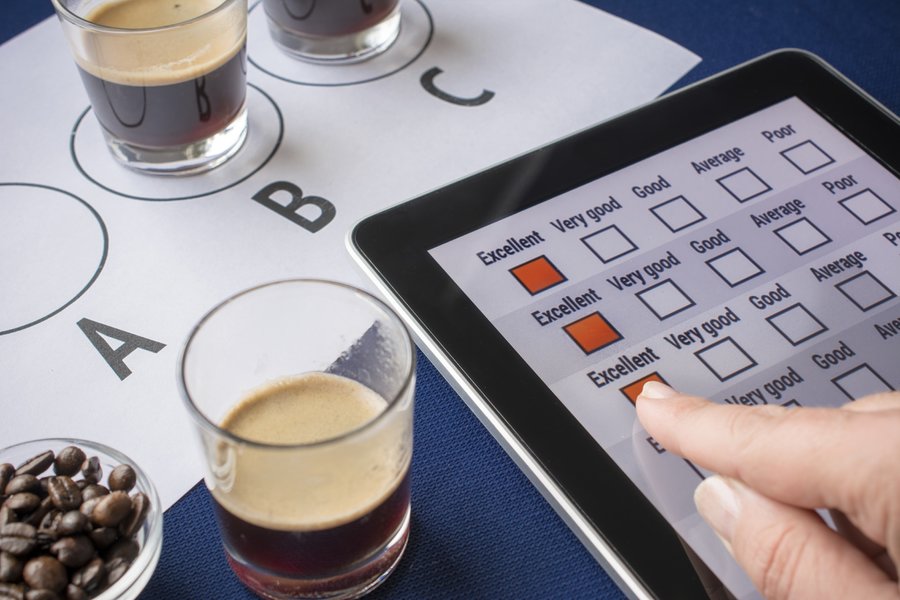ISO 50572 Sensory Consistency Testing in Sauces
The ISO 50572 standard for sensory consistency testing is critical for ensuring the quality and uniformity of sauces. This service focuses on quantifying the rheological properties of sauces, which are essential for maintaining consistent texture, mouthfeel, and overall consumer satisfaction.
Rheology deals with the flow and deformation behavior of materials under various conditions. In sauces, this translates to understanding how the product behaves when stirred or poured. Consistency is a key factor in determining the quality of sauce products, especially those that require specific textures for optimal consumption. For instance, ketchup should have a certain degree of stickiness but not be too thick; mayonnaise must possess a defined texture that allows it to coat bread easily.
ISO 50572 provides methodologies to measure the consistency of sauces under different shear rates and temperatures. This standard is widely recognized in the food industry for its ability to provide consistent, replicable results across various facilities. The testing process involves subjecting samples to controlled shear stress conditions using a rheometer. Rheometers are specialized instruments designed to apply controlled shear stresses to liquids or semi-solids while measuring the resulting viscosity.
The standard specifies several parameters that must be considered during sensory consistency testing, including:
- Temperature: The temperature at which the sauce is tested can significantly impact its flow characteristics. For example, a sauce's viscosity typically decreases as temperature increases due to reduced intermolecular forces.
- Shear Rate: This parameter describes how fast the fluid flows under shear stress. Different products require different shear rates for optimal performance; sauces like ketchup and mayonnaise have distinct shear rate requirements during processing and packaging.
- Viscosity: Measured in Pa·s, viscosity is a measure of a fluid's resistance to gradual deformation by shear or tensile stress.
Proper specimen preparation is crucial for accurate results. Samples should be taken from the production batch and stored under controlled conditions until testing. It’s important that these samples remain unaltered throughout the process, as even minor changes in temperature or handling can affect test outcomes.
The sensory consistency testing procedure outlined in ISO 50572 involves several steps:
- Preparation of the sample: Ensuring the sauce is at the correct temperature and has been sufficiently mixed to achieve a homogenous state.
- Application of shear stress: Using a rheometer, the sauce is subjected to controlled shear stresses over a range of temperatures and shear rates. The instrument records the viscosity data during this process.
- Data analysis: The recorded data are analyzed to determine the consistency properties of the sauce. This includes identifying any inconsistencies or variations that could indicate quality issues.
Quality managers, compliance officers, R&D engineers, and procurement teams benefit from this service by ensuring adherence to international standards, which enhances product reliability and consumer satisfaction. By conducting rigorous sensory consistency tests according to ISO 50572, manufacturers can maintain consistent product quality across different batches and locations.
Why It Matters
The importance of sensory consistency testing in sauces cannot be overstated. Consistency is not just about the physical properties of a sauce; it’s also deeply tied to consumer perception and satisfaction. Irregularities in texture can lead to dissatisfaction among consumers, potentially resulting in lost sales and negative brand reputation.
From a production standpoint, maintaining consistent sensory properties ensures that each batch of sauce meets the desired specifications. This is particularly important for large-scale manufacturers who produce sauces in high volumes. Consistency allows for efficient quality control processes, reducing waste and ensuring that products meet regulatory requirements.
The standardization provided by ISO 50572 also facilitates communication between different facilities or partners involved in the production chain. When all parties follow the same testing protocols, it becomes easier to identify and resolve inconsistencies promptly, thereby improving overall product quality.
In addition to enhancing consumer satisfaction and ensuring compliance with international standards, sensory consistency testing helps businesses differentiate their products from competitors. By offering a consistent product experience, companies can build trust and loyalty among consumers, which is crucial for long-term success in the competitive food market.
Industry Applications
- Ketchup Production: Consistency testing ensures that ketchup has the desired stickiness and smooth texture, which enhances its appeal to consumers.
- Mayonnaise Processing: Monitoring sensory consistency helps maintain the proper coating properties of mayonnaise on bread or other substrates.
- Salsa Manufacturing: Consistent viscosity is essential for achieving the right pourability and spreadability, which are key factors in consumer acceptance.
- Pickle Sauce Production: Ensuring uniform consistency helps prevent lumps and ensures that the sauce blends smoothly with other ingredients.
The results of sensory consistency testing can also inform process optimization. By identifying variations in viscosity or texture, manufacturers can adjust production parameters to achieve optimal consistency across all batches. This not only improves product quality but also enhances operational efficiency by minimizing waste and reducing the need for rework.
International Acceptance and Recognition
The ISO 50572 standard has gained widespread acceptance in the food and beverage industry due to its rigorous methodology and consistent results. Many global organizations, including major food manufacturers and regulatory bodies, adopt this standard as a benchmark for sensory consistency testing.
International recognition of this standard ensures that products tested according to ISO 50572 are consistently recognized across different markets. This is particularly beneficial for multinational companies looking to maintain product quality standards globally. Compliance with international standards also enhances credibility and trust in the marketplace, which is crucial for maintaining a positive brand image.
The global acceptance of ISO 50572 further supports the interoperability of testing results between different laboratories around the world. This allows businesses to collaborate more effectively on research and development projects or quality assurance initiatives without facing discrepancies in test outcomes due to differing local standards.





